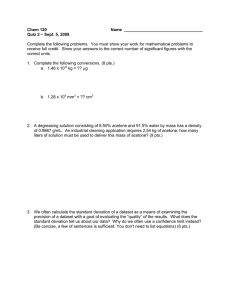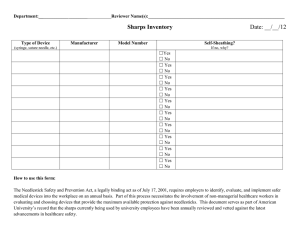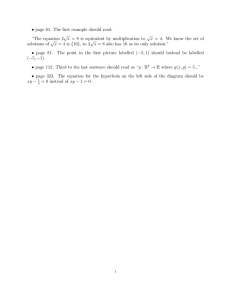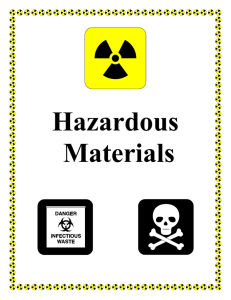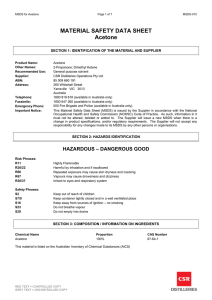School of Biological Sciences
advertisement
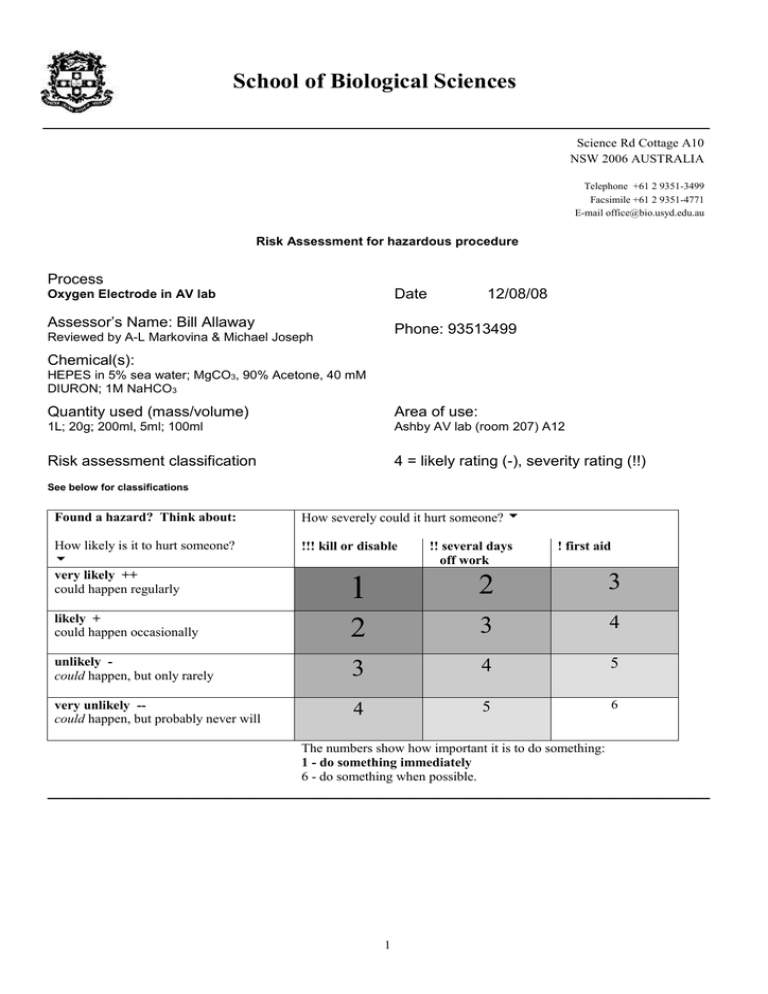
School of Biological Sciences Science Rd Cottage A10 NSW 2006 AUSTRALIA Telephone +61 2 9351-3499 Facsimile +61 2 9351-4771 E-mail office@bio.usyd.edu.au Risk Assessment for hazardous procedure Process Date Oxygen Electrode in AV lab Assessor’s Name: Bill Allaway 12/08/08 Phone: 93513499 Reviewed by A-L Markovina & Michael Joseph Chemical(s): HEPES in 5% sea water; MgCO3, 90% Acetone, 40 mM DIURON; 1M NaHCO3 Quantity used (mass/volume) Area of use: 1L; 20g; 200ml, 5ml; 100ml Ashby AV lab (room 207) A12 Risk assessment classification 4 = likely rating (-), severity rating (!!) See below for classifications Found a hazard? Think about: How severely could it hurt someone? How likely is it to hurt someone? very likely ++ could happen regularly !!! kill or disable !! several days off work ! first aid 1 2 3 likely + could happen occasionally 2 3 4 unlikely could happen, but only rarely 3 4 5 very unlikely -could happen, but probably never will 4 5 6 The numbers show how important it is to do something: 1 - do something immediately 6 - do something when possible. _____________________________________________________________________________ 1 Is the procedure hazardous? Yes If yes please list details of substances or hazardous aspects of procedure; 1. Electrical equipment & water on same bench 2. 90% Acetone – flammable & toxic 3. DIURON is potentially toxic 4. Sharp blades used for cutting 5. Sharp syringe needles 6. Nitrogen gas cylinders - high pressure gas Are the appropriate Material Safety Data Sheets (MSDS) available in the work area Yes Please attach MSDS to hard copy of this form for your records If there is a likelihood of exposure, please state probable route Yes Skin contact or inhalation of acetone vapour Is it necessary to perform this procedure in a fumehood or with local exhaust No Are special storage, transport or disposal procedures required? Yes Acetone waste should be collected in a labelled 5 L plastic waste bottle and placed in a chemical bunker for collection. Sharps should be discarded into appropriate Sharps containers. What personal protective equipment is required? N/A Is an eye wash/safety shower located near the work area? No Are first aid facilities nearby? Yes Is fire equipment nearby? Yes What steps have been taken to control the risks associated with this procedure 1. 2. 3. 4. 5. 6. Earth leakage circuit breakers and warnings in manual/web pages Small volumes of acetone only, no flames, adequately labelled Very small volumes of Diuron used, adequately labelled Sharps containers, warnings in manual/web pages Sharps containers, warnings in manual/web pages Cylinders restrained, operated under direct supervision, weakest link in tube adjacent to cylinder to avoid possible projectile effect if pressure allowed to rise too high Warnings are announced during practical and notices used & info in student materials. MSDS available in yellow folder in AV lab. What is the level of proficiency of the users of this procedure undergraduate i.e undergraduate, researcher, post graduate etc. Staff are highly trained and will assist with the procedure. Do the intended users have adequate training/experience Yes If no, what training is required? Any other relevant information One demonstrator will be present for 32 students Revision number. Date 12/08/08 Signature 2


